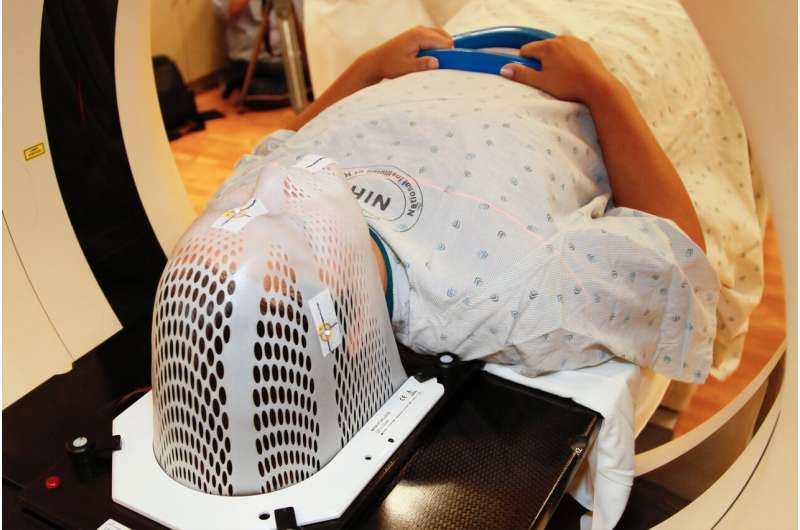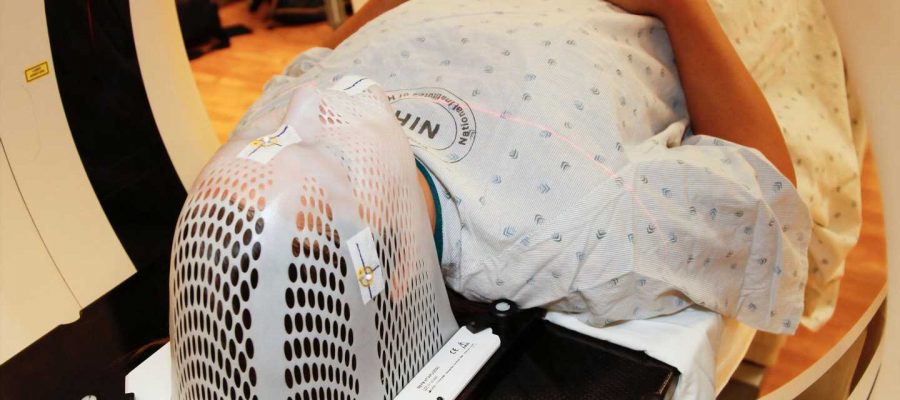
Up to 60% of cancer patients receive radiation therapy, but it doesn’t always work. Failure of these treatments results from tumor regrowth at the primary tumor site, or when the tumor metastasizes to another part of the body. New research from the University of Chicago looks to overcome resistance to radiotherapy by suppressing a key protein and allowing the immune system to join the fight as well.
The study, published May 25 in Cancer Cell, shows how a drug treatment that inhibits YTHDF2 (or Y2), a protein that suppresses the immune response following radiotherapy, can improve results from radiation alone or when combined with immunotherapy. This treatment also prevents progression of metastasis at distant sites that sometimes occurs after local radiation, which makes Y2 a promising target for future combined treatment plans.
“These findings are of potential clinical significance because not only can we enhance the local effects of radiation, but we can also eliminate these adverse distant effects of radiation,” said Ralph Weichselbaum, MD, Daniel K. Ludwig Distinguished Service Professor and Chair of Radiation and Cellular Oncology at UChicago, and senior author of the study. “I think these findings could alter radiotherapy practice.”
Abscopal vs. ‘bad-scopal’
Radiotherapy sometimes produces what’s known as an abscopal effect, where local radiation of a tumor also causes a tumor in another part of the body to shrink. The phenomenon is rare, but it’s thought to involve activation of the immune system. Radiation stimulates positive immune effects, such as producing more antigen-presenting cells and CD8+ T cells, as well as negative effects that dampen the anti-tumor immune response. A type of blood cells referred to as myeloid-derived suppressor cells (MDSCs) migrates to the tumor site and inhibits the anti-tumor immune response by blocking CD8+ T cell anti-tumor effects. This influx of MDSCs also interferes with immunotherapy, which is intended to unleash the immune system to fight tumors.
Weichselbaum and Chuan He, Ph.D., John T. Wilson Distinguished Service Professor of Chemistry and co-author of the new study, analyzed the results of two clinical trials for cancer patients conducted by Steven Chmura, MD, Ph.D., Professor of Radiation and Cellular Oncology and his colleagues. The researchers observed that following radiation, when the patients’ levels of MDSCs went up, they had adverse outcomes. The MDSCs also overexpressed Y2 following radiotherapy. Genetic and epigenetic analysis demonstrated that Y2 induction activated the MDSCs’ migratory and immune suppressive functions in the tumor, as well as throughout the body. Amazingly, this local treatment had an effect throughout the body.
In many cases, these abundant, Y2-expressing cells also seemed to make distant metastasis progress after local radiation, which Weichselbaum calls the “bad-scopal” effect. “This effect is underreported, but it seems to be much more common than the abscopal effect,” he said.
Twofold effects
Prof. He is a renowned biochemist who studies how chemical modifications to DNA and RNA can dynamically change their expression. In a 2019 study with Weichselbaum, their team showed that a related protein called YTHDF1 (Y1) also interfered with immunotherapy, and when it’s blocked, the immune system was better able to fight tumors. Y1 and Y2 are used to recognize modifications to RNA and regulate biological processes. Y1 facilitates translation of mRNA into proteins; Y2 degrades the mRNA, but its role in immune cells related to radiotherapy and immune therapy hasn’t been explored in depth.
In the current study, led by Liangliang Wang, Ph.D., a staff scientist in Weichselbaum’s lab, the team worked with mouse models which had the gene that produces Y2 knocked out in MDSCs. When these mice were given radiation for local tumors, the treatment was more effective and prevented the “bad-scopal” effect of making distant tumors metastasize. In these models where Y2 was suppressed, MDSCs were also limited in their ability to migrate into tumors and suppress immune response.
Working with colleagues from the Chinese Academy of Sciences, the team also identified a small molecule called DC-Y13 that blocks Y2, replicating the effect of the gene knockouts. When given to mice, this drug improved responses to radiotherapy and immune therapy similarly to genetic deletion of Y2.
“What you see is that radiation works much better on local tumors, and it also seemed to suppress the development of distant metastasis,” Weichselbaum said. “So, there was a two-fold bang for our buck, so to speak.”
Promising collaborations
Weichselbaum thinks Y2 could play an important role both as a treatment target and as a biomarker. Patients could be screened following an initial radiation treatment, for example, and if they have high levels of Y2-producing MDSCs, they could be given a drug to limit its effects. Such a strategy could be combined with other treatments, like immunotherapy or the technology pioneered by Weichselbaum and Wenbin Lin, Ph.D., the James Franck Professor of Chemistry, that uses nanoparticles to deliver drug compounds directly to tumors.
“We not only have a biomarker, but we also have a strategy for intervention based on collaborations with our partners in the Department of Chemistry and the Physical Sciences Division at UChicago,” Weichselbaum said. “I’m very excited about it.”
More information:
Ralph R Weichselbaum, YTHDF2 inhibition potentiates radiotherapy anti-tumor efficacy, Cancer Cell (2023). DOI: 10.1016/j.ccell.2023.04.019. www.cell.com/cancer-cell/fullt … 1535-6108(23)00163-0
Journal information:
Cancer Cell
Source: Read Full Article
